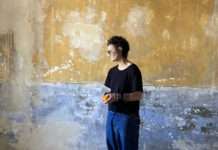One of the most important tasks in the conservation of this emblematic species is constant monitoring, which is why hidden cameras have been installed to detect furtive nest thieves. The problem is that many of these hunters are armed. For García, this is the greatest threat to the scarlet macaw and those fighting for its conservation.
The department of Petén in northern Guatemala, where Laguna del Tigre is located, is home to active drug-trafficking gangs, a factor that must also be taken into account by those dedicated to conservation in this part of Central America.
García and his team suffered the loss of five chicks stolen from their nests in 2017; armed thieves had discovered a hidden camera and shot it down.
A study carried out between 2015 and 2017 by environmental organizations and the governments of Belize and Guatemala found scarlet macaws are trafficked across both countries, with lax border controls a major problem.
“The species’ population in both countries is currently at risk of extinction as a consequence of this illegal trading,” the study says; García says he believes the trafficking is worse in Guatemala.
“People steal the chicks for the black market in pets,” he says. “[They are] illegally sold to private collectors, [and] we believe that the main market is here in Guatemala, but they do certainly go to other places where they fetch a higher price.”
Chicks are also stolen on the Mexican side, rendering the scarlet macaws’ last corridor for movement under permanent siege by humans.

The vice president and the missing macaws
In 2015, Guatemala’s vice president, Roxana Baldetti, was forced to step down amid corruption allegations, and arrested soon after. During a raid on her home, investigators found two scarlet macaws; Guatemala’s special court dedicated to prosecuting crimes against the environment was duly informed.
But when environmental officers went to rescue the birds, they were surprised to find that someone had already removed them from the scene. To date, the whereabouts of Baldetti’s macaws remain unknown. How the birds came to be there in the first place is another story.
Sources close to the case told Mongabay the two birds were acquired through middlemen who were in contact with traffickers. Wildlife traffickers typically don’t work for a specific criminal organization, but they know how to remove chicks from their nests. They’re responsible for the illegal trafficking of 70 percent of the scarlet macaws in Guatemala, according to estimates by the WCS. What exacerbates this problem is that eight out of 10 birds that fall into the hands of the traffickers die in transit.
Baldetti was convicted of corruption in October of 2018 in one of several cases she faces, and sentenced to 15 and a half years in prison. She is also wanted by the U.S. government on cocaine-trafficking charges. The president she served, Otto Pérez Molina, also faces trial for corruption in Guatemala. The political storm has pushed the case of the macaws to the periphery of public interest, and although there’s an ongoing investigation, the special environmental court says it cannot release any further details.
Baldetti was not the first official to be found in possession of macaws in her home. In 2014, as Baldetti was leading an interinstitutional summit to coordinate a crackdown on wildlife trafficking, Diego Thomas Giesemann Widwann, an official with the National Council of Protected Areas (Consejo Nacional de Áreas Protegidas, or CONAP) was arrested for having 31 specimens of endangered animals in his home, including scarlet macaws, according to a report by the environmental court.
Trafficking within the corridor
According to José María Castillo, a researcher with the Balam Association, a Guatemalan group dedicated to conservation, El Perú is the sector of the macaw corridor most frequented by wildlife traffickers.
Castillo says an organized criminal “structure” exists, implemented by rural people and middlemen. The former raid the nests while the latter take the lion’s share of the money they receive from selling the chicks. “There are middlemen who have as many as 15 specimens,” Castillo tells Mongabay.
This story first appeared on Mongabay
South Africa Today – Environment
This article is licensed under a Creative Commons Attribution-NoDerivatives 4.0 International License.
You may republish this article, so long as you credit the authors and Mongabay, and do not change the text. Please include a link back to the original article.












